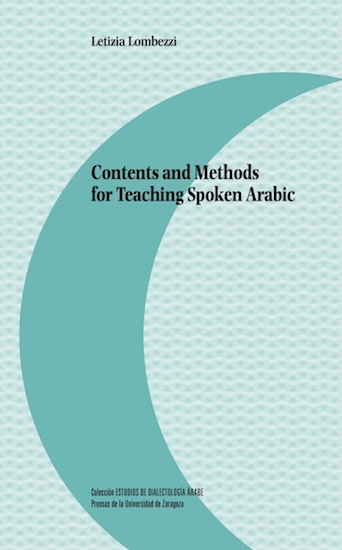Este libro proporciona un marco teórico y diversas pautas para aplicar la dialectología a la enseñanza, situándose en el ámbito de la lingüística aplicada. El desafío radica en llevar la dialectología más allá de la investigación descriptiva. ¿Por qué hay que promocionar el árabe hablado? ¿Cómo pueden los alumnos convertirse en hablantes? ¿Podemos diseñar plantillas morfológicas aplicables a diferentes variedades? El trabajo responde a todo ello a través de sus siete capítulos, y proporciona cuatro planes didácticos basados en teorías e investigaciones actualizadas.
- Cover
- Copyright page
- Title page
- Acknowledgments
- Transcription System
- Introduction
- Part I. Theorical and methodological frame
- Chapter 1. General Analysis: Language and Teaching
- 1.1. Reasons for different orientations in language instruction
- 1.2. Clarifications concerning terminology
- 1.3. How did it go, so far?
- 1.4. Historically, what has promoted the choice to teach the ‘standard’?
- 1.5. The ‘theory of disservice’
- 1.6. The colloquial register as a ‘ linguistic right’
- Chapter 2. Structure and Use of the Language Criteria for a Choice
- 2.1. Spoken and written Arabic: techniques, materials and distinct cognitive patterns
- 2.2. Why should spoken Arabic ever be favored? Strategic choices for
early literacy
- 2.3. An example of concrete application in Europe: the methods and
instructional planning at the University of Leipzig
- 2.5. Mechanisms of variations and change in Arabic. The main studies on motivation, operational modalities, and strategies
- 2.4. The speaker, message, and context: factors that trigger the predominance of spoken Arabic
- 2.6. Summary analysis of the main changes between standard and
colloquial: initial issues
- 2.7. Which dialect? (which standard?)
- 2.8. Route to the “spoken interdialectal Arabic”. Motivations for the of an Arabic for mutual intelligibility
- 2.9. Nomenclatures attributed to the different Arabics
- 2.10. New writing practices: the dialect in Arabic script
- Chapter 3. Main Criteria and Needs for Teaching Arabic
- 3.1. Becoming capable of communication: the importance of the sequencing
- 3.2. From sound perception to decoding: how does the processing of language work?
- 3.3. Listening and understanding: a game action in defense
- 3.4. The need for a “procedural grammar”
- 3.5. How to resolve the conflict between the different approaches to the teaching of standard and dialect
- Chapter 4. Selection of Significant Elements and Strategies
on the Functional Level
- 4.1. Introduction: the concepts of ‘markedness’ and ‘saliency’
- 4.2 Explanations concerning the greater significance of some
features compared to others
- 4.3. Identifying and using the best expressive strategies: an innate ability?
- 4.4. Selection of morpho-syntactic elements and structures for an’ interdialectal Arabic grammar’
- Part II. Research and teaching practice
- Chapter 5. Fieldwork and Results
- 5.1. Questionnaire on the field: specifications
- 5.2. My informants and the system for presenting the results
- 5.3. Final considerations
- Chapter 6. Teaching Practice
- 6.1. General frame
- 6.2 Definition of specific tactics for the development of single skills
- Chapter 7. Syllabi
- 7.1. A concrete proposal for the instructional development
- 7.2. How may a teacher use these syllabi?
- 7.3. Levantine Arabic of Beirut
- 7.4. The Omani Arabic of ʕIbrī
- 7.5. Moroccan Arabic of Rabat
- 7.6. The Egyptian Arabic of Cairo
- Conclusions
- Annexes
- Bibliography
- Table of Contents

